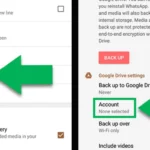In the digital age we live in today, social media has become an essential part of our lives. It’s a platform that connects people from all walks of life, allowing them to share ideas, experiences, and information. But what exactly is social media? This essay explores the concept of social media’s history, types, impact, and best practices.
What is Social Media?
Online communities that facilitate content creation, sharing, and exchange are referred to as social media. These platforms are built on the principles of user-generated content, enabling individuals to interact with each other and build communities. Social media has revolutionized communication, making it easier and faster to connect with people around the globe.
History of Social Media
Social media’s history can be traced back to the early days of the internet. Bulletin board systems (BBS) and online forums were among the first forms of social media. However, the advent of platforms like MySpace and Friendster truly popularized social networking. Today, social media giants like Facebook, Instagram, Twitter, and TikTok dominate the landscape.
Types of Social Media
There are various social media platforms, each with unique features and target audience. Among the most prevalent kinds are:
- Social Networking Sites: Platforms like Facebook and LinkedIn are designed to connect with friends, family, and professional contacts.
- Microblogging Platforms: Twitter and Tumblr allow users to share short, concise messages.
- Photo and Video Sharing Platforms: Instagram and YouTube are famous for sharing visual content.
- Social Messaging Apps: WhatsApp, Messenger, and Telegram are used for real-time communication.
Impact of Social Media
The impact of social media on society has been significant. It has transformed how we communicate, consume information, and conduct business. Some of the critical effects of social media include:
- Enhanced Connectivity: Social media has made it easier for people to connect, regardless of geographical location.
- Increased Access to Information: Users can access vast information and knowledge through social media platforms.
- Economic Opportunities: Social media has created new economic opportunities like marketing and influencer partnerships.
- Social and Political Movements: Social media has played a crucial role in social and political movements, allowing individuals to organize and mobilize.
- Adverse Impacts: While social media has many benefits, it also has some drawbacks, including cyberbullying, misinformation, and addiction.
Best Practices for Social Media Use
To use social media effectively and responsibly, it is essential to follow some best practices:
- Be Mindful of Privacy: Be aware of your privacy settings and avoid sharing personal information that you don’t want to be public.
- Use Social Media Responsibly: Avoid spreading misinformation, cyberbullying, or hate speech.
- Be Selective in Your Followings: Follow accounts that align with your interests and values.
- Limit Screen Time: Excessive use of social media can negatively affect your mental health and productivity.
- Engage with Others: Use social media to connect, share your experiences, and learn from different perspectives.
Conclusion
Social media has become an indispensable part of our modern world. It offers numerous benefits, including enhanced connectivity, increased access to information, and economic opportunities. However, using social media responsibly and mindfully is essential to avoid negative consequences. By following best practices, individuals can harness the power of social media to connect, learn, and grow.






